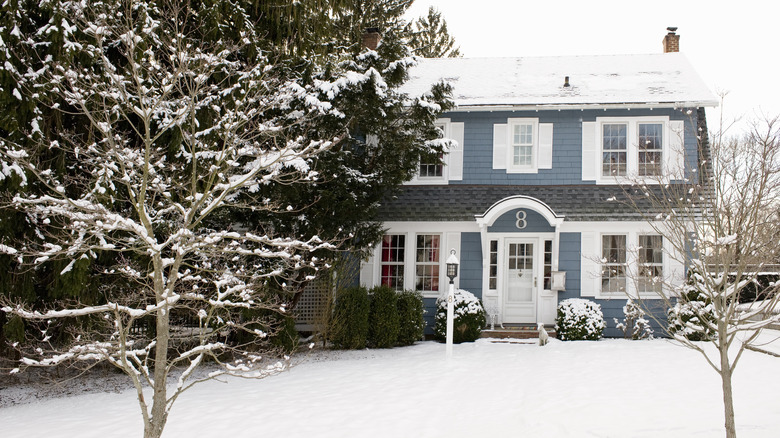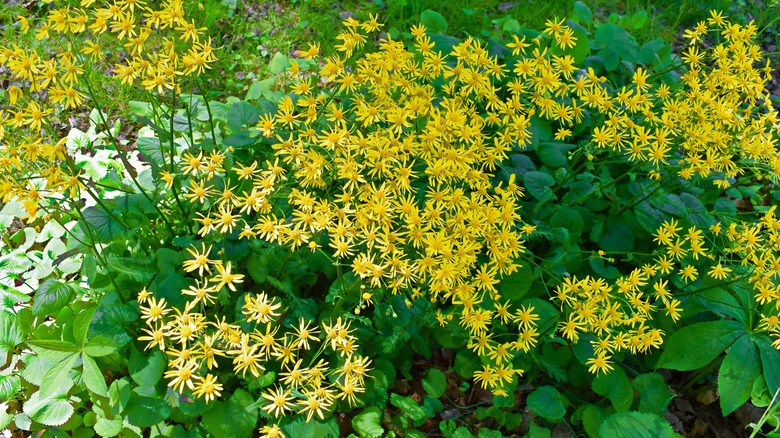The Shade-Tolerant Ground Cover You Can Grow In The Winter For Early Spring Blooms
After a long, cold winter, there's nothing better than watching your garden come to life in the spring with colorful flowers to brighten up your day and put a smile on your face. It's like the garden is waking up from a prolonged slumber and responds to the warming sunshine by putting on a spectacular show. One lovely shade-tolerant ground cover that will really give you a lift with its early spring blooms is golden groundsel (Packera aurea). And what's even more exceptional is that this plant will stay green over winter in USDA hardiness zones 3 through 8. So, it's perfect for planting in those barren patches to add a little foliage color to your yard when not much else is growing and when your deciduous trees are just bare branches.
Golden groundsel is native to the U.S. and Canada. It has bright green slender and toothed stem leaves that develop in the spring after the flowers appear. But throughout winter, your yard will benefit from the continuing display of the basal leaves that are heart-shaped and dark green. Come early spring, the plant will send up tall flowering stems with maroon buds that gradually open up to greet you with pretty yellow daisy-like blooms. What you'll find more impressive is that the flowers are fragrant and you can even cut some to fill a vase.
What you need to know to grow golden groundsel
Golden groundsel, also commonly known as golden ragwort, can be grown in either full sun or partial shade. It does prefer moist acidic soil and can even handle wet conditions for short periods. If you have wet areas in your yard, this is one of those plants that will flood your rain garden with abundance. It's a clumping perennial and can spread quickly via offshoots to form a nice dense mat. Just keep in mind that the leaves are poisonous, but with only low toxicity, and may cause skin irritation.
This low-maintenance species will attract pollinators to your yard such as bees, flower flies, and small butterflies who will appreciate the nectar in the scented blooms that can last right through summer. Birds are also fond of the seeds that develop after flowering. In fact, this is one of numerous gorgeous flowers you'll want in your yard to attract summer birds. To keep your plant looking its best, you might want to trim off the spent flower stems once the seeds have dispersed. And, if you want to brighten up your yard during those long, cold months, you might want to try growing a variety of delightful flowers that are perfect for a vibrant winter garden.

